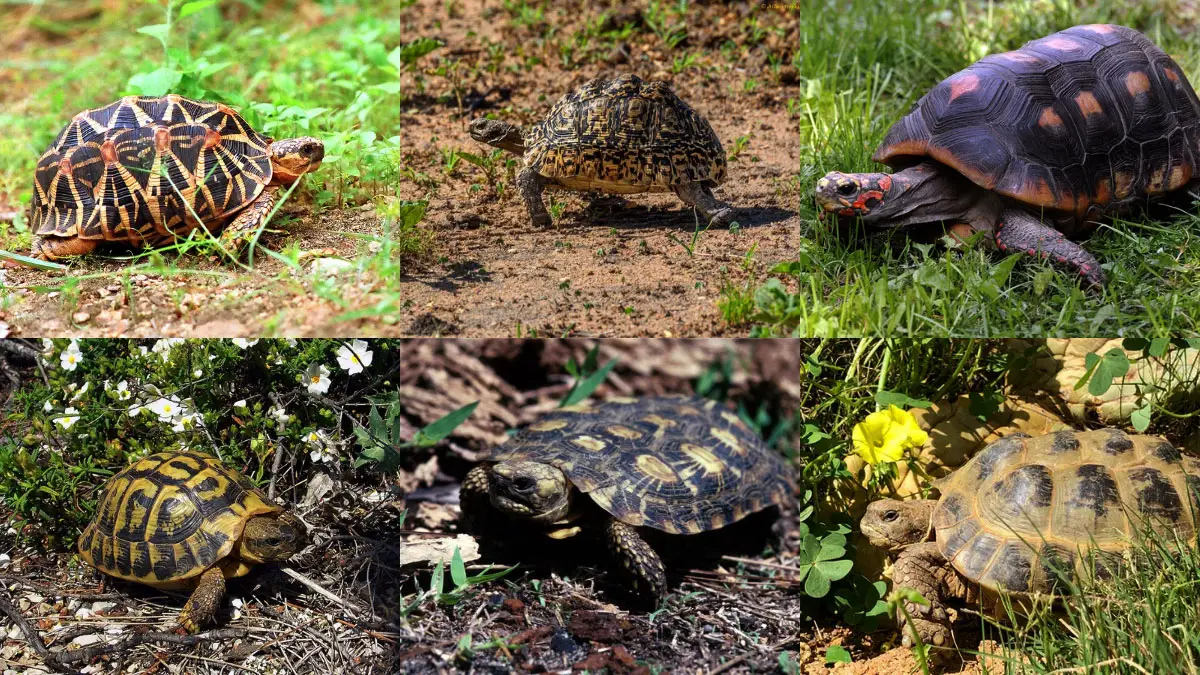What Kind of Tortoise Do I Have? A Comprehensive Identification Guide
If you’ve recently adopted a tortoise and don’t know its species name, you need to do some homework. You have to know their origin to provide tortoises with proper care, food, and other necessities. So, how can you determine the answer to “what kind of tortoise do I have?”
First, you should ask the seller, “what kind of baby tortoise do I have?” if it’s a baby. Though they should, but if they can’t answer you, you have to find out its species name by studying the tortoise’s shell pattern and physical characteristics.
To simplify the process, we’ve created a list of popular and frequently adopted tortoises with their key characteristics to identify their species. Keep reading for further details.
How to Identify What Kind of Tortoise Do I Have?
Contents
Different tortoise breeds require different care, temperature, and diets. That’s why it’s necessary to understand what kind of tortoise pet you have. However, there are more than 50 species of tortoise worldwide.
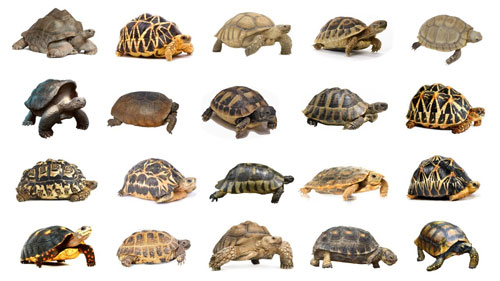
If you’ve already purchased a pet tortoise, read the following details and try to figure out your tortoise species’ name.
1. Red-Foot Tortoise (Chelonoidis carbonarius)
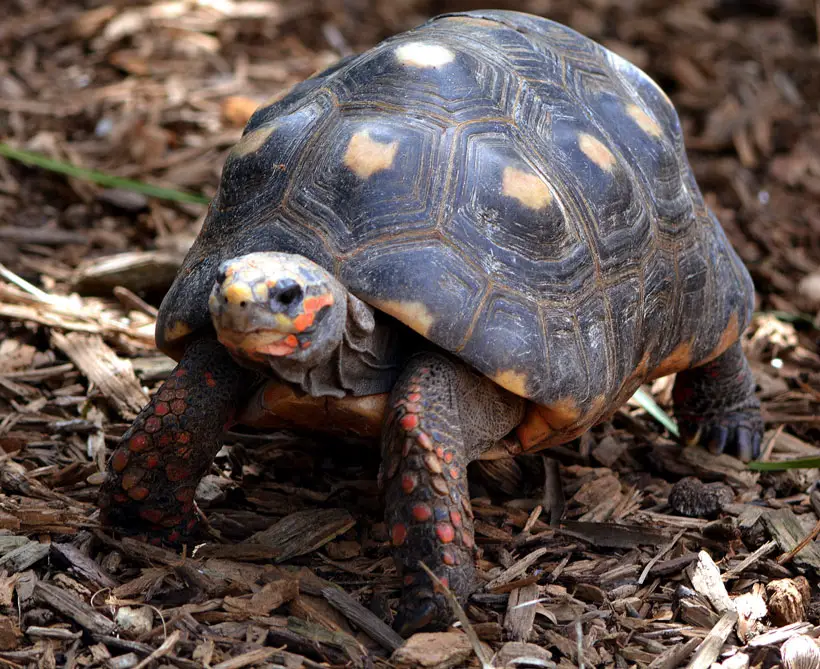
This tortoise species is popular worldwide as they survive for a long time, up to 50 years. Here are some details about a red-footed tortoise that you can match with your pet tortoise and determine whether it’s a red-footed species:
- Just like its name implies, this tortoise species have bright red feet.
- Red-footed tortoises have a bumpy shell that curves inward like the interior of a sphere or circle.
- Their shell color is a combination of black, brown, or gray.
- The head color of this tortoise is black with yellow spots.
- Their average length is 13.5 inches for males and 11.25 inches for females.
2. Hermann’s Tortoise (Testudo Hermanni)
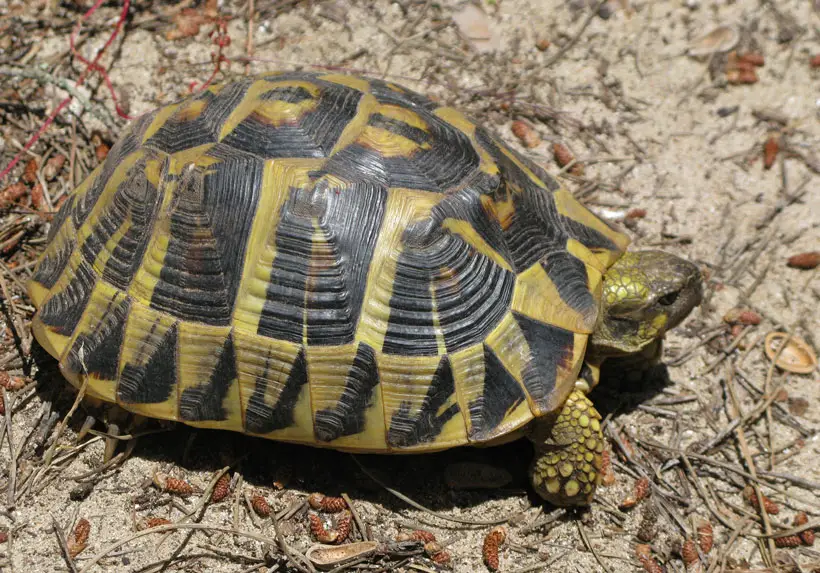
People prefer this species as their pet tortoise due to their calm and gentle nature. Here are some unique characteristics of Hermann’s species that distinguish them from other tortoises:
- Check your pet tortoise’s plastron. Hermann’s species have two black bands on their plastron between the central seam.
- These types of tortoise pets have a dome-shaped shell with a distinct yellow-orange color with bold black spots.
- Their head color varies from yellow to olive, including dark patches.
- Hermann’s tortoises have yellow flecks on their cheeks.
- These tortoises can grow between 6 to 7 inches.
3. Leopard Tortoise (Stigmochelys Pardalis)
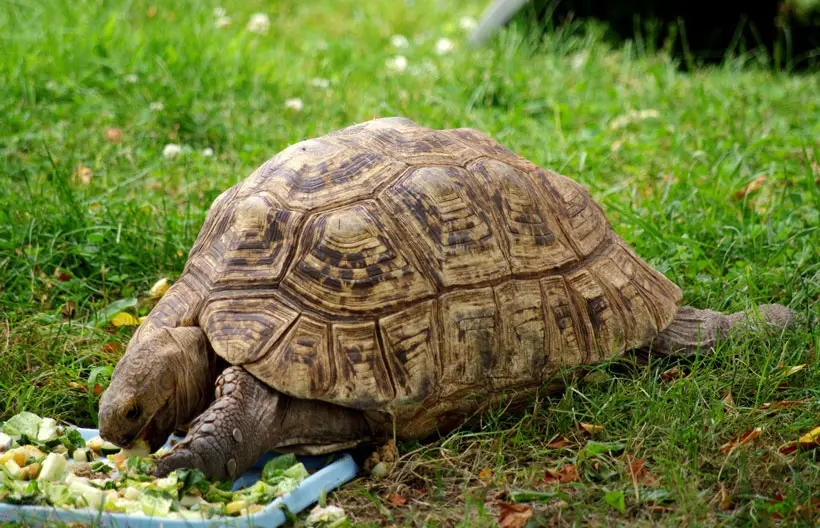
These tortoise species are the largest species to keep at home as a pet. Leopard tortoises can grow to a maximum length of 28 inches. They have some unique characteristics that will help you to identify their species.
- The carapace has a black and yellow contrasting pattern.
- Their shell has the shape of a high dome with steep sides.
- The Leopard species’ plastron is developed with long paired gulars.
- Leopard tortoises have a tan-colored head with a hooked upper jaw.
- They have long tails, and female leopard tortoises don’t have terminal spines like male leopards.
4. Pancake Tortoise (Malacochersus Tornieri)
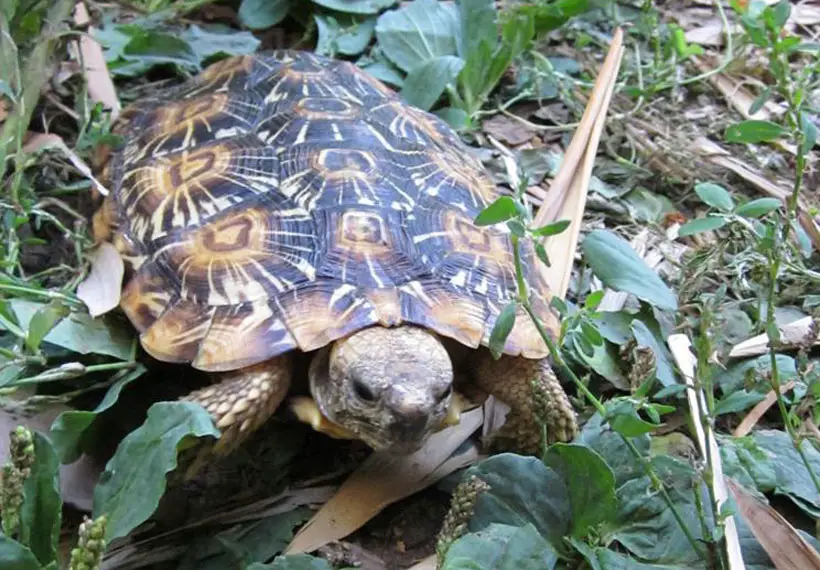
It’s easy to identify Pancake tortoise species due to their shape and small size (about 7 inches). Here are some key characteristics of a pancake tortoise:
- Pancake tortoise species have a unique flat profile as their ribs and backbone are joined to form a shell.
- These species are lightweight, weighing around 1 lb. Hence, they are fast compared to other tortoises.
- Their soft brown shells have protective keratin scutes developed with dark lines.
- Pancake tortoises have a pale yellow plastron with light yellow rays and dark brown seams.
- Their tail, head, and limbs also have yellowish-brown color.
5. Gopher Tortoise (Gopherus Polyphemus)
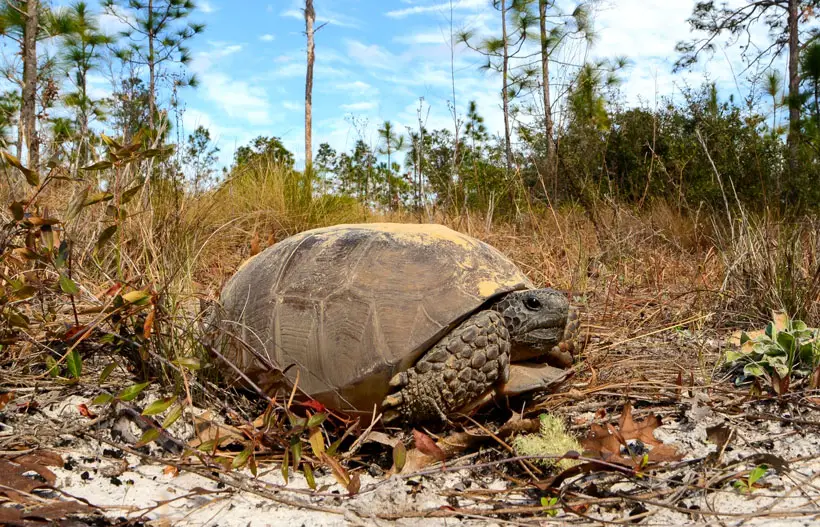
This is a mid-size species of tortoise that grows between 9 to 11 inches. The following tortoise characteristics will help you to find out whether you have a gopher tortoise.
- Gopher tortoise species have thick and heavy legs.
- Their forelegs developed with sturdy claws that helped them to burrow.
- Gopher tortoises have brown, tan, or gray sturdy shells with pale yellow patterns.
- Female gopher tortoises have a flat plastron. On the other hand, male tortoises have a large concavity that they can show off.
- They prefer well-drained sandy soil for their home.
6. Russian Tortoise (Testudo Horsfieldii)
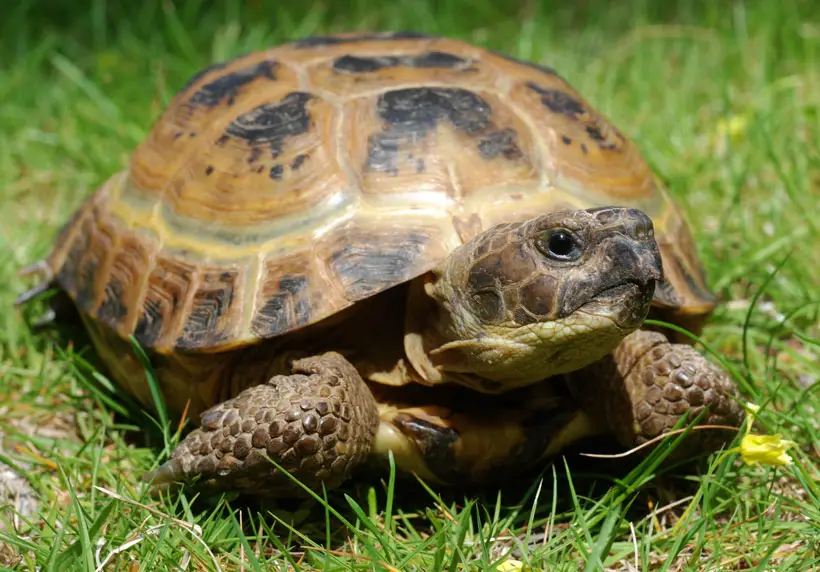
This tortoise species is popular worldwide for its gentle behavior, small size (8 to 10 inches), and active nature. If you’re confused about whether your pet tortoise is a Russian tortoise, check out the following features.
- They have an attractive shell color combination of white, brown, and black.
- The carapace of the Russian tortoise is round, long, and wide.
- Russian tortoises have brown to yellowish-brown toes.
- Their toes are equipped with protective scutes that include dark brown markings.
- Russian tortoises have black plastrons, including yellow seams.
7. Marginated Tortoise (Testudo Marginata)
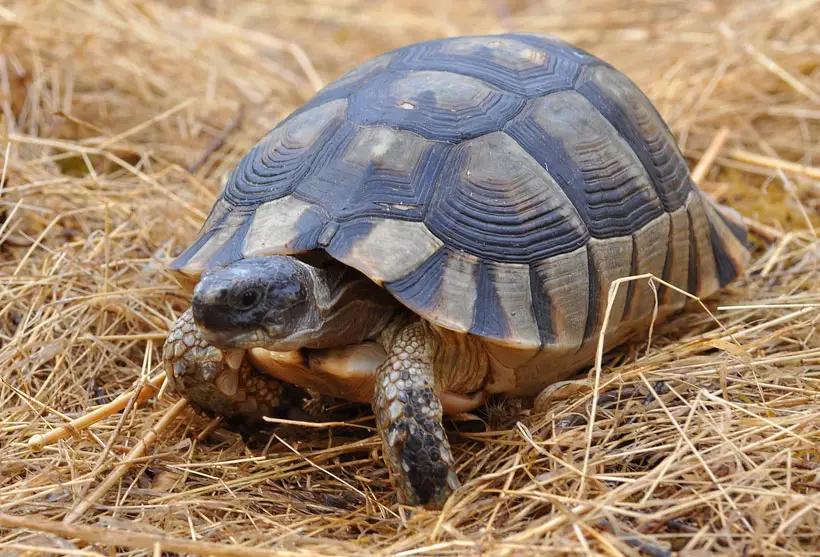
This tortoise species is known as the largest European species that grows around 25 to 30 cm. And male marginated tortoises process aggressive nature against other male tortoises. Here are some more details on Marginated tortoise species to identify them:
- Their thighs are not developed with any tubercles or spurs.
- The tail of the Marginated tortoise contains no horn tip.
- Marginated species’ plastrons are equipped with scutes with dark triangle patterns.
- Female marginated tortoises have flexible plastrons compared to males.
- They have elongated body shapes than other reptiles.
8. Indian Star Tortoise (Geochelone Elegans)
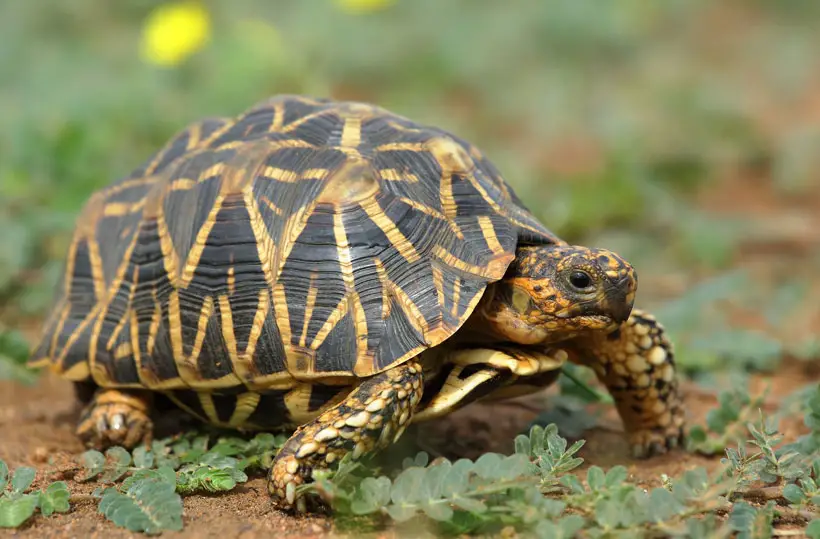
This tortoise species is famous for its unique star-shaped patterns on its shell. Here are some key physical characteristics of Indian Star tortoises to identify them:
- They have pointy black shells with white lines over their shell plats that give their shell a star pattern.
- Their forehead is swollen and covered with small shields.
- Indian Star tortoises have feebly hooked beaks with the strong upper jaw.
- The size of these tortoises varies depending on their gender. However, they are small species that grow around 8 inches.
- Their black upper shell has yellow areolae streaks.
FAQs
Here are some frequently asked questions about how to recognize the type of species you have:
Identifying a baby tortoise species is similar to the identification process of an adult tortoise species. You should look at their shells and examine them. However, be gentle, as hatchlings initially have soft shells.
The plastron pattern helps to identify the gender of your pet tortoise. Your pet is a male tortoise if the plastron pattern is concave or indented. And in case the plastron pattern is convex or flat, it’s a female tortoise.
Conclusion
So, what kind of tortoise do I have? Generally, tortoises are divided by their shell patterns and colors. Therefore, the practical way is to study some popular species and match their characteristics with your pet tortoise’s shell, color, size, tail, etc.
In case you failed to find out the species name of your pet tortoise following these methods, you can contact the seller and ask about the species name. If that’s not possible, you can talk with a veteran who has extensive knowledge about tortoises.

